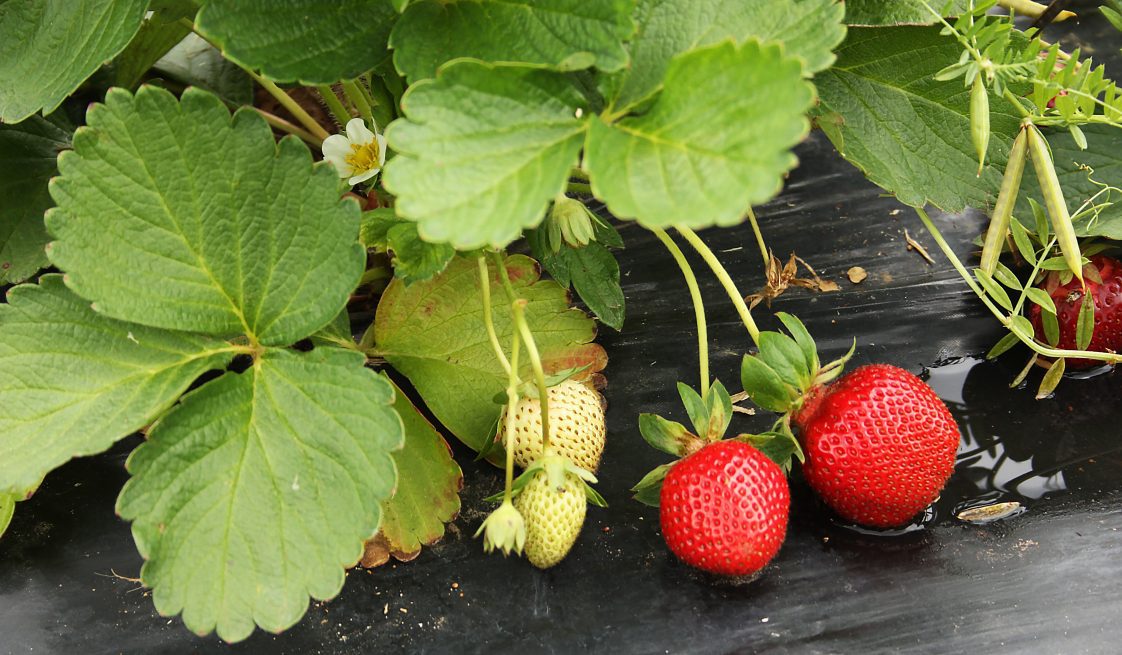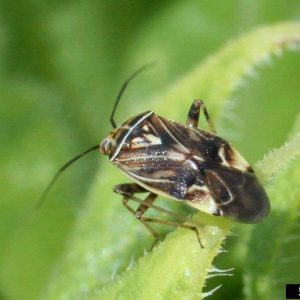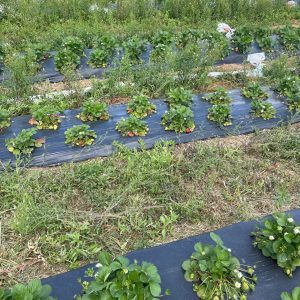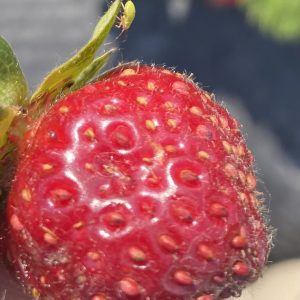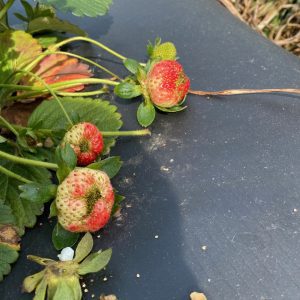Crop Production

Tarnished plant bugs (Lygus lineolaris)—also known as lygus bugs—can have a substantial economic impact on strawberry producers in Alabama. This insect uses its piercing/sucking mouthparts to feed on flowers and seeds of immature fruit of strawberries, as well as other crops and native plants. These insects overwinter as adults by taking cover in plant debris. Then, females will begin to lay eggs during the spring, as temperatures begin to increase. Tarnished plant bug nymphs are green in color, while adults develop a brown coloration with mottled, brown wings. Adults are approximately ¼ inch in length.
Tarnished plant bugs feed on seeds of immature strawberries, which results in misshapen fruit, often at the tip. This creates cat-faced fruit, which renders the fruit unmarketable. This damage is similar to injury commonly seen during the early season that is a result of poor pollination. Fruit damaged by poor pollination will produce seeds of various sizes, while fruit damaged by tarnished plant bugs will contain seeds of similar size.
- Tarnished plant bug (Lygus lineolaris) (Palisot de Beauvois). Photo credit: Russ Ottens, University of Georgia, Bugwood.org
- Tarnished plant bugs are attracted to fields with native weeds.
- A strawberry with damage from tarnished plant bugs.
- Tarnished plant bugs nymphs on a strawberry.
Scouting and Management
Intense scouting should be conducted to monitor plant bug populations prior to seeing damaged fruit. Scouting for plant bugs includes laying a white cloth or sheet underneath the plant canopy and shaking the plant to knock the insects onto the sheet where they can easily be seen. Plant bugs can often be found in shaded areas within the plant canopy during the warmer part of the day or on the upper parts of the plant early in the day, before temperatures begin to increase.
Managing weed populations within and around strawberry plantings is one of the most effective cultural practices to reduce plant bug populations, as these insects commonly feed on many native weed species. Current recommendations for chemical control include Transform (sulfoxaflor), Rimon (Novaluron), Brigade (bifenthrin), and Danitol (fenpropathrin). There has been documentation of insecticide resistance, so chemical rotation is important to reduce established populations.
Chemical rates and preharvest intervals can be found in the 2024 Southeast Regional Strawberry Integrated Pest Management Guide Focused on Plasticulture Production on University of Georgia Extension website, extension.uga.edu.
Trade and brand names used in this publication are given for information purposes only. No guarantee, endorsement, or discrimination among comparable products is intended or implied by the Alabama Cooperative Extension System.

